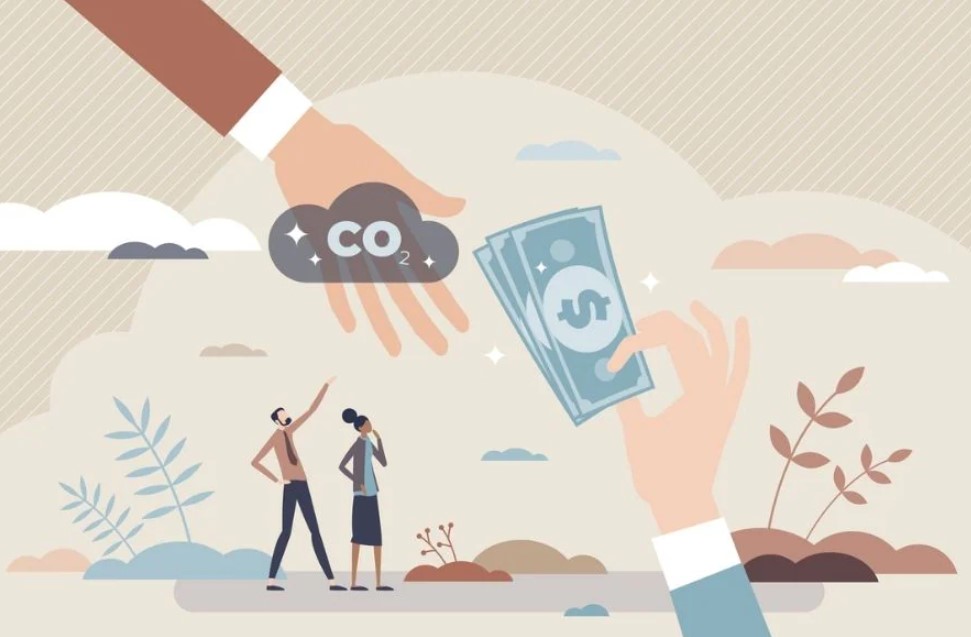It has become increasingly recognized that climate change poses a very serious threat to humanity, and while there are countless solutions to address what the United Nations has described as the “existential threat” of our time, it is still not entirely clear how these solutions will be advanced.
Media Center – Department of Environmental Media
There is a noticeable increase in renewable energy investments and sustainable infrastructure, but between January 2020 and 2021 globally, more money was spent on fossil fuels, which when burned generate harmful gases that lead to climate change.
Many countries lack the financial resources to transition to clean energy and a sustainable lifestyle that can reverse climate change.
Broadly speaking, climate finance is about money that needs to be spent on the full range of activities that will slow climate change and help the world reach the goal of limiting global warming to an increase of 1.5°C above pre-industrial levels.
To achieve this goal, the world needs to reduce greenhouse gas emissions to practically zero by 2030, or net zero or zero emissions also heard in the context of climate action financing.
Initiatives that must be funded to achieve net zero include those that reduce emissions of harmful gases as well as those that promote or protect natural solutions that capture those gases, such as forests and oceans.
The funding also aims to improve the resilience of the populations most affected by climate change and help them adapt to changing climatic conditions, measures that will in turn help limit warming.
The financing aims to transition to the so-called green economy, for example renewable energy that provides electricity without producing carbon dioxide or other forms of air pollution is an essential building block for promoting sustainable economic growth.
But with rising global temperatures, along with changing weather patterns, rising sea levels, and increases in droughts and floods, the world’s most vulnerable populations face ever-increasing risks, food insecurity, and fewer opportunities to break out of poverty and build a better life.
In fact, the United Nations estimates that climate change could push an additional 100 million people into poverty by 2030.
This underscores the urgent need for significant financial resources, sound investments and a systematic global approach to address these troubling trends.
The necessary resources, significant investment, and international cooperation is critical. More than a decade ago, developed countries committed to jointly mobilize $100 billion annually, by 2020, to support climate action in developing countries.
It may sound like a lot but compare that to global military spending in 2020 which was estimated at less than $2 trillion or $2000 billion or trillions of dollars spent by developed countries on coronavirus-related relief for their citizens.
According to an expert report prepared at the request of the UN Secretary-General, the $100 billion target ($79 billion mobilized) has not been met, although climate finance is on an upward trajectory. Therefore, there is still a huge funding gap.

The real question is whether the world can afford not to invest in climate action.
Societies around the world are already suffering from the financial impacts of climate change, whether it’s crop losses due to drought or massive damage to infrastructure due to floods or other extreme weather.
At the United Nations climate summit in Copenhagen, rich nations made a major pledge. They promised to direct $100 billion a year to less affluent countries by 2020, to help them adapt to climate change and mitigate rising temperatures. $100 billion is out of reach, as UN Secretary-General Antonio Guterres admitted: “We are not there yet.”
Compared to the investment required to avoid dangerous levels of climate change, the $100 billion pledge is minuscule. Trillions of dollars will be needed each year to achieve the 2015 Paris Agreement’s goal of limiting global warming to “well below” 2°C, if not 1.5°C, above pre-industrial temperatures. And developing countries will need hundreds of billions of dollars annually to adapt to the already inevitable global warming. “But $100 billion is an iconic symbol in terms of the goodwill of the countries that have been promised,” he said.
How bad is the failure of rich countries?
Negotiators have never agreed on how to accurately measure state commitments. The Organization for Economic Cooperation and Development, an intergovernmental body made up mostly of rich countries, bases its assessment on reports from the rich countries themselves. They contributed $80 billion in climate finance to developing countries in 2019. Most of that money came from public grants or loans, either transferred from one country to another directly, or through multilateral funds and development banks.
The smaller amount is the private financing that is said to have been mobilized by public funds, such as loan guarantees and loans granted alongside public funds.
But some analysts say the OECD numbers are greatly exaggerated. In a 2020 report, international aid charity Oxfam estimated public climate finance at between $19 billion and just $22.5 billion in 2017-18, about a third of the OECD estimate. This is largely because Oxfam argues that, besides grants, only interest accrued from lending at below-market rates should be calculated, not the full value of the loans.
The smaller amount is the private financing that is said to have been mobilized by public funds, such as loan guarantees and loans granted alongside public funds.
But some analysts say the OECD numbers are greatly exaggerated. In a 2020 report, international aid charity Oxfam estimated public climate finance at between $19 billion and just $22.5 billion in 2017-18, about a third of the OECD estimate.
This is largely because Oxfam argues that, besides grants, only interest accrued from lending at below-market rates should be calculated, not the full value of the loans. It also points out that some countries wrongly view development aid as directed towards climate projects. Japan, for example, treats the full value of some aid projects as “climate related” even when they do not target climate action exclusively, says Tracy Carty, senior policy advisor on climate change at Oxfam.
As another example, some road-building projects have been reported as climate aid, with most or all of their costs included in the OECD estimates, says Romaine Wierman’s, a climate finance specialist at the Finnish Institute of International Affairs in Helsinki.
Many low- and middle-income countries agree with Oxfam, and some go further: In 2015, India’s Ministry of Finance disputed the OECD’s estimate of $62 billion in climate finance in 2014, saying the true figure was $1 billion. Rich countries have deliberately inflated their climate aid, says Diane Blackline, a climate change ambassador for Antigua and Barbuda who was previously the lead climate negotiator for a group of coastal and low-lying island nations called the Alliance of Small Island States.

Who does not pay enough?
Although the rich nations collectively agreed to the $100 billion goal, they have not made any formal agreement on what each should pay. Instead, states make pledges in the hope that others will follow suit. Multiple analyses of the theoretical fair share of these payments have come to the same conclusion: The United States has failed too often.
A report in October estimated that the United States should contribute 40-47% of $100 billion, depending on what took into account wealth, past emissions or population. But its average annual contribution from 2016 to 2018 was only about $7.6 billion, the World Resources Institute estimates. Also, Australia, Canada and Greece were far less than they should have contributed. On the other hand, Japan and France transferred more than their share in the form of repayable loans, not grants.
Where did the money go?
Most of the climate finance went to projects to reduce greenhouse gas emissions. The Paris Agreement aimed to strike a balance between “mitigation” projects and those that help people adapt to the effects of climate change. But only $20 billion went to adaptation projects in 2019, less than half the money earmarked for mitigation projects, the Organization for Economic Co-operation and Development found. UN6 estimates that developing countries already need $70 billion annually to cover adaptation costs, and will need $140 billion to $300 billion in 2030.
Donors may prefer mitigation projects because success is clear and measurable – it can be measured by avoiding or capturing carbon emissions – while successful adaptation is not easy to define.
Politicians in developed countries see that they get more recognition from other countries, and from domestic voters, for spending to reduce emissions, she adds, while adaptation aid is seen as helping only specific recipient countries.
But much of this funding requires the approval of the US Congress, and many other countries will contribute more as a percentage of its economy, while the European Union and its member states are already providing twice the amount the United States has pledged, even with a combined economy three-quarters the size of the US economy.
How Much Climate Finance Is Sufficient?
Although some people currently see that talk about financing climate-related projects has gone too far, especially in light of the lack of clarity and transparency in the mechanisms for disbursing all these funds, even one of the most important voices that argued billionaire Bill Gates, he believes that the money is spent on mitigation projects Without making an income it is wasted effort.
However, the Climate Policy Initiative, a San Francisco-based non-profit research group, has estimated that climate financing in 2019-2020 will be 632 billion, or 0.7% of global GDP. Almost half of this funding was from the private sector, mostly for renewable energy generation.
This is well below the estimates of the Intergovernmental Panel on Climate Change, which indicated that $1.6 trillion – $3.8 trillion is needed annually to avoid a temperature rise of more than 1.5 degrees Celsius. Frustratingly, fossil fuels remain subsidized, receiving about $554 billion annually between 2017 and 2019, according to one estimate, with annual global military spending reaching $2 trillion.
The real challenge now is how to ensure that the largest amount of funding is spent on projects that address climate change problems, or else the world will go from failure to failure.
Recources






